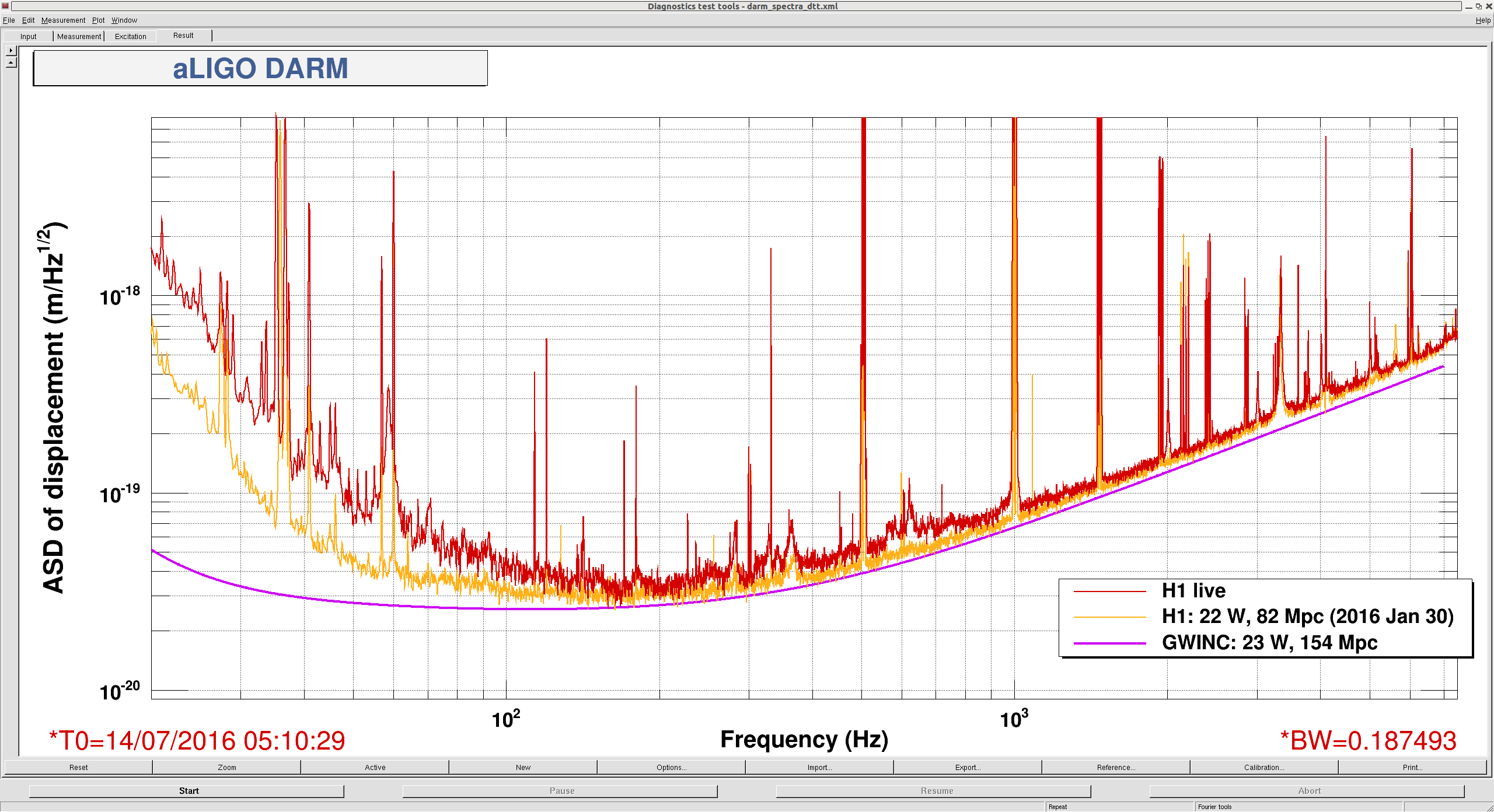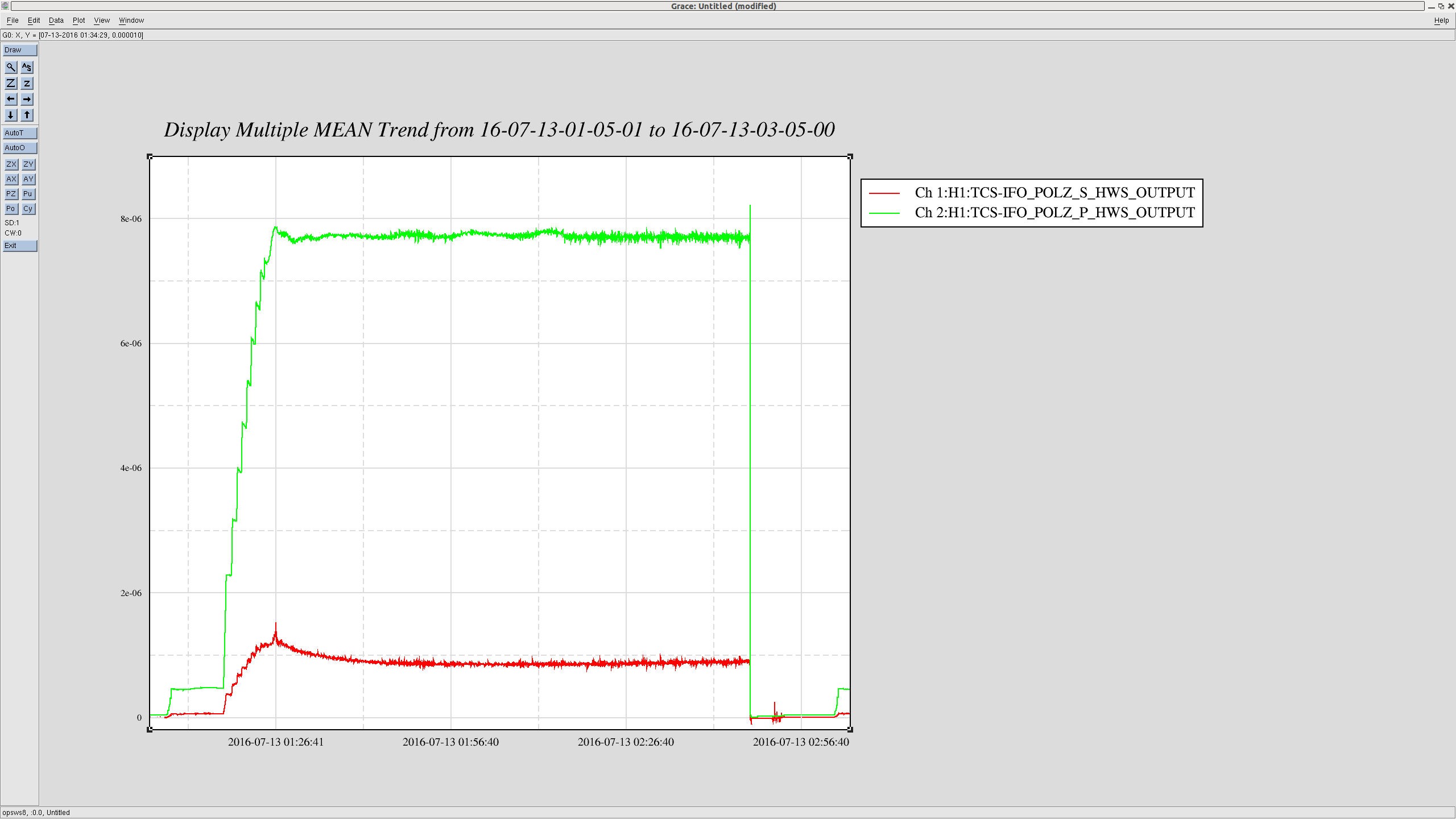Sheila, Matt, Kiwamu, Carl, Stefan
Earlier today we tried heating TCS CO2 X-arm with 2Watt (0 Watt into Y), and all we saw was a futher drop in recycling gain.
Tonight (07:29 UTC) we tried the opposite TCS: TCS CO2 Y-arm with 1Watt (0 Watt into X). (Half of what we put into x, because we broke lock on the first try.)
Result: Absolutely nothing - all recycling gains remained the same or further dropped.
Conclusion: TCS CO2 cannot get any recycling gain back.
============================================
Log:
UTC 20160713 23:08:09 all TCS CO2 completely off
no effect on any sidebands
UTC 20160713 23:16:22 TCS CO2 X to 1 W
UTC 20160713 23:21:21 TCS CO2 X to 2 W
recycling gains drop, lock loss
UTC 20160714 07:29:00 TCS CO2 X to 2 W, TCS CO2 Y to 0 W
recycling gains drop, lock loss





















 . I agree that C00 must have the same sign error and therefore what we saw in the summary page is correct.
. I agree that C00 must have the same sign error and therefore what we saw in the summary page is correct.






